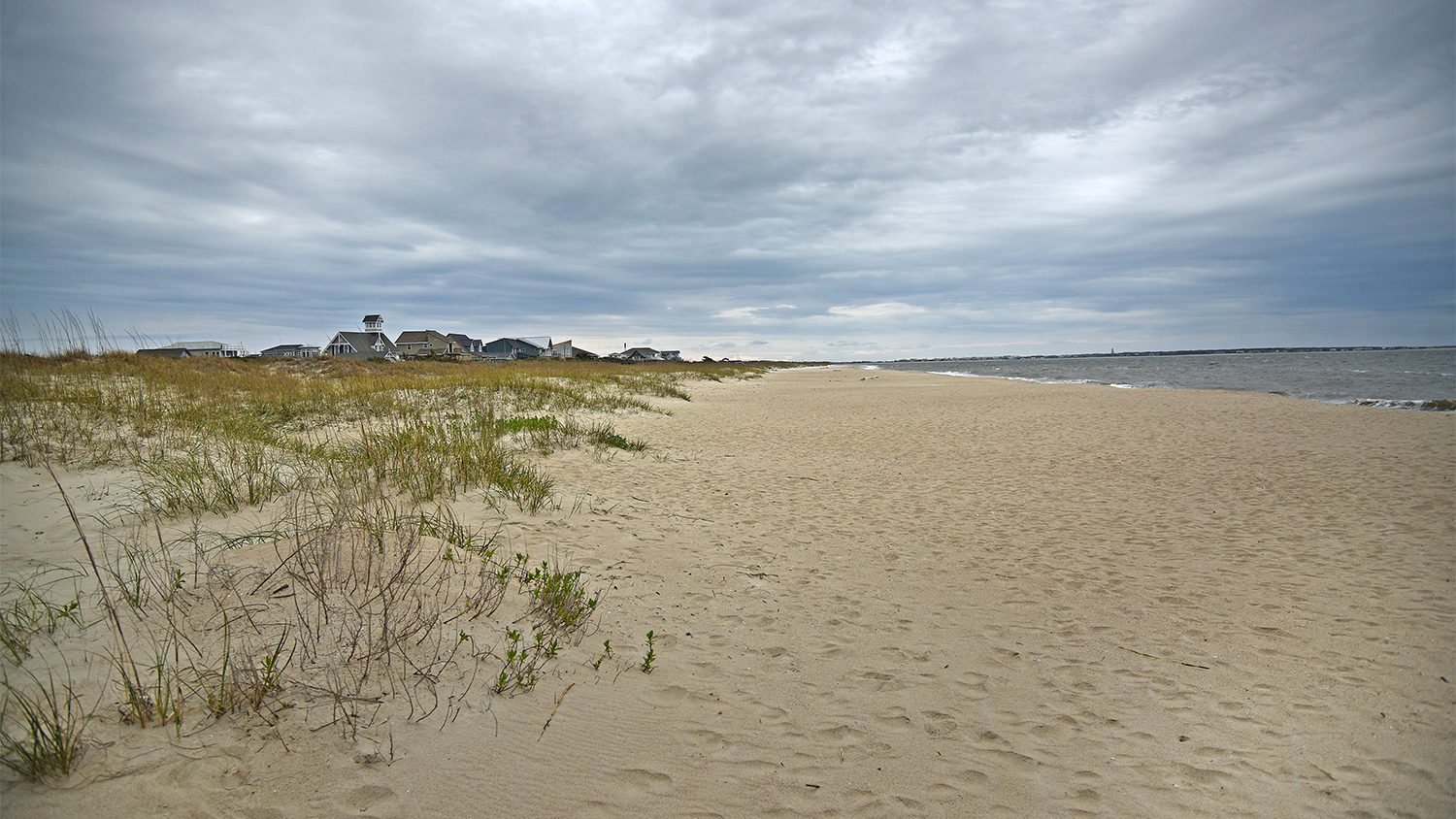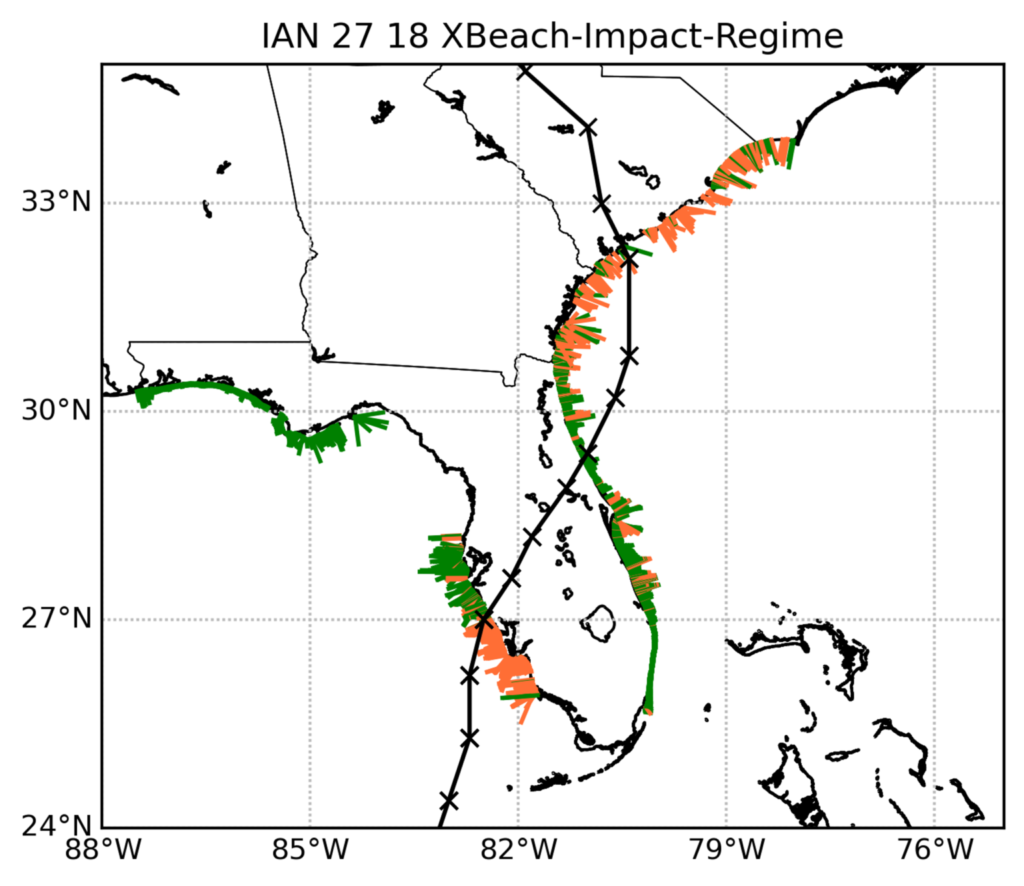New technology forecasts beach and dune erosion before hurricanes strike

Hurricane season may have ended on November 30, but the damage caused by storms like Beryl, Francine, Helene, and Milton still persists along the coastlines. These powerful storms don’t just batter homes—they erode beaches and dunes, the natural barriers that protect coastal communities from catastrophic flooding. Existing forecast systems, like the U.S. Geological Survey (USGS) Coastal Change Forecast Viewer, are based on simplified equations and do not allow the beach and dune to evolve during a storm. CCEE researchers are developing frameworks to use dynamic, physics-based models to forecast coastal erosion in real time.
“Physics-based models can predict how the dune may be lowered, and how much water may flood behind it,” said Jess Gorski (MS 2023), who worked with Professor Casey Dietrich on the project. “Our forecasts can provide information about coastal change to decision makers during a storm.”

In collaboration with the USGS, CCEE researchers developed a framework for running the eXtreme Beach (XBeach) model in real time. The U.S. Gulf and Atlantic coasts are described with thousands of transects, which quantify the offshore depths and the shape of the beach and dune at intervals of 500 m to 2 km along the coast. When a storm approaches, the framework can select the transects that may be affected, and then run a few hundred simulations of the coastal erosion.
At each transect, the model predicts whether the beach and dune will be eroded by wave action, or whether the dune will be overtopped by floodwaters. Transects are labeled with these predictions in maps that show the vulnerable portions of the coast.
“For each transect, we can label whether the waves and water levels will get higher than the dune and cause flooding behind it, and then compare with existing forecasts,” Dietrich said. “But our forecasts also predict the evolution of the transect, and how the beach and dune may ‘fail’ during the storm.”
The framework’s performance was evaluated for Ian in 2022. It was able to forecast erosion for about 1800 transects spanning hundreds of kilometers of coastline in less than two hours. About a day before Ian’s landfall, more than 80 percent of predicted dune impacts in southwest Florida were in agreement with existing forecasts. And, with limited observations during or after the storm, the model forecasts provide more information about erosion and sediment transport.
The framework was automated at NC State, where it was first tested by forecasting erosion during hurricanes like Ian and Nicole in 2022. Since then, it has been transferred to collaborators who used it for real-time operational forecasts in subsequent hurricane seasons. Now, the USGS has adopted the system, with Gorski, now a physical scientist at their St. Petersburg office, helping to integrate it into their forecasting operations.
This project was supported by the U.S. National Ocean Partnership Program (NOPP) as
part of the NOPP Coastal Hurricane Impacts project (ONR Grant N00014-21-1-2184). These research findings were documented in a journal manuscript, “Deterministic, dynamic model forecasts of storm‑driven coastal erosion,” which was published recently in Natural Hazards.
This post was originally published in the Department of Civil, Construction and Environmental Engineering.
- Categories:


